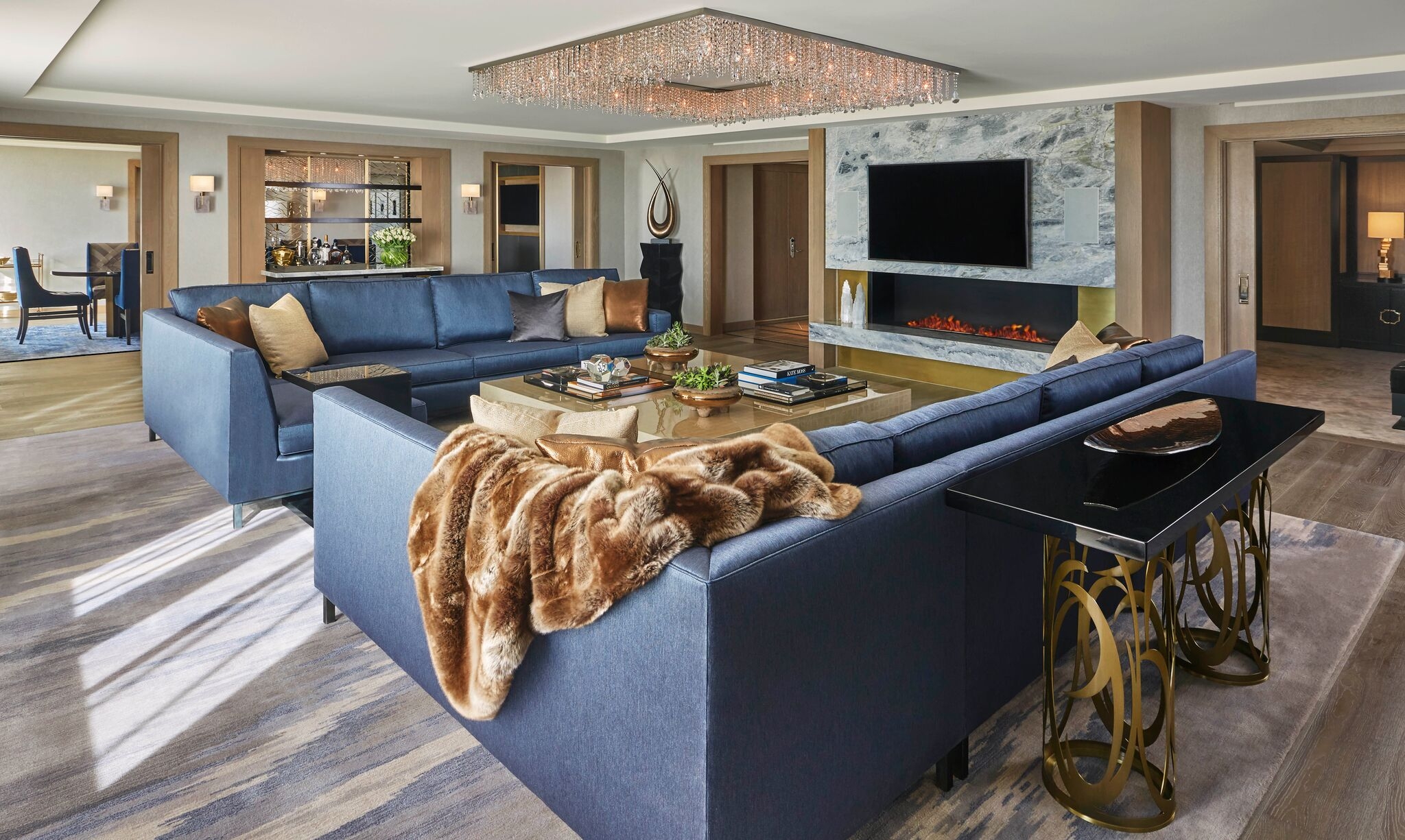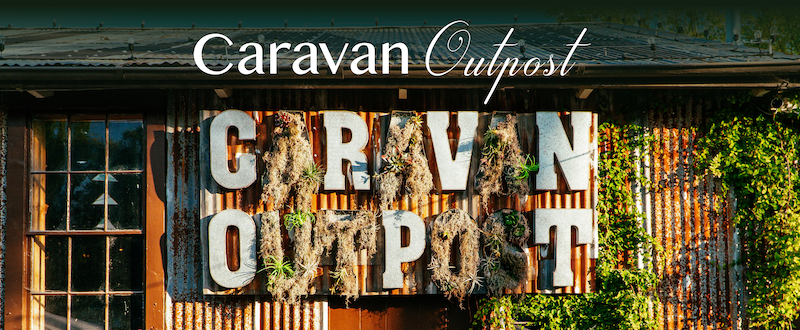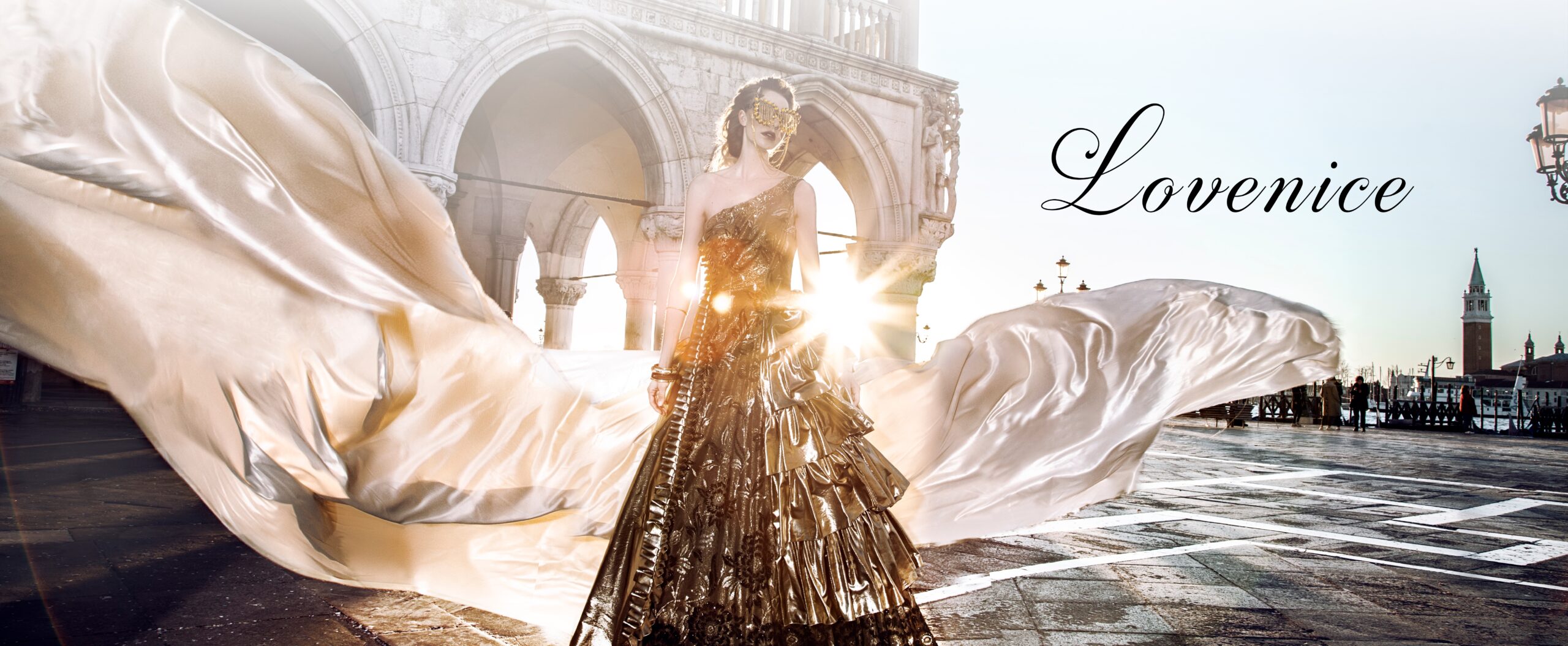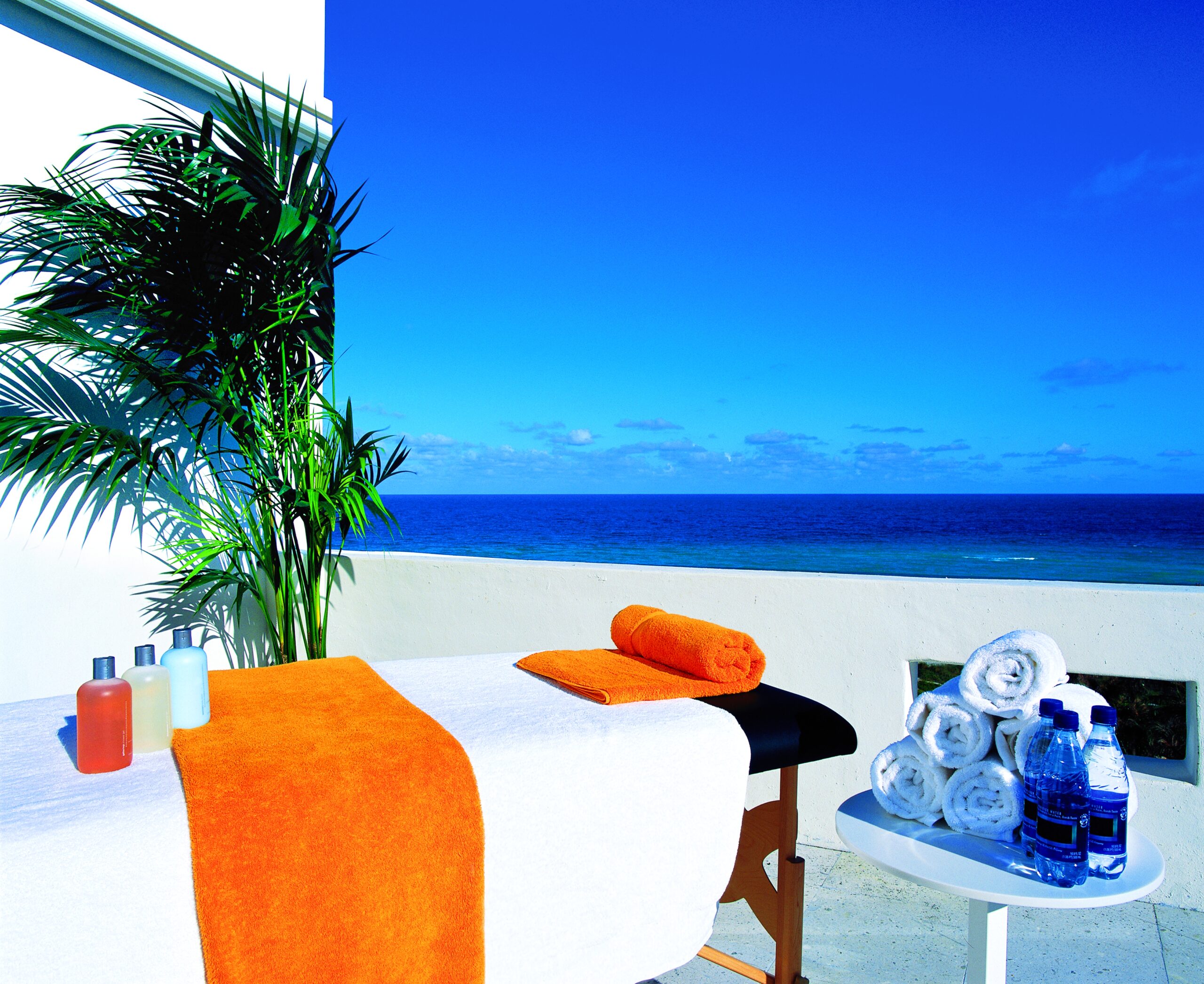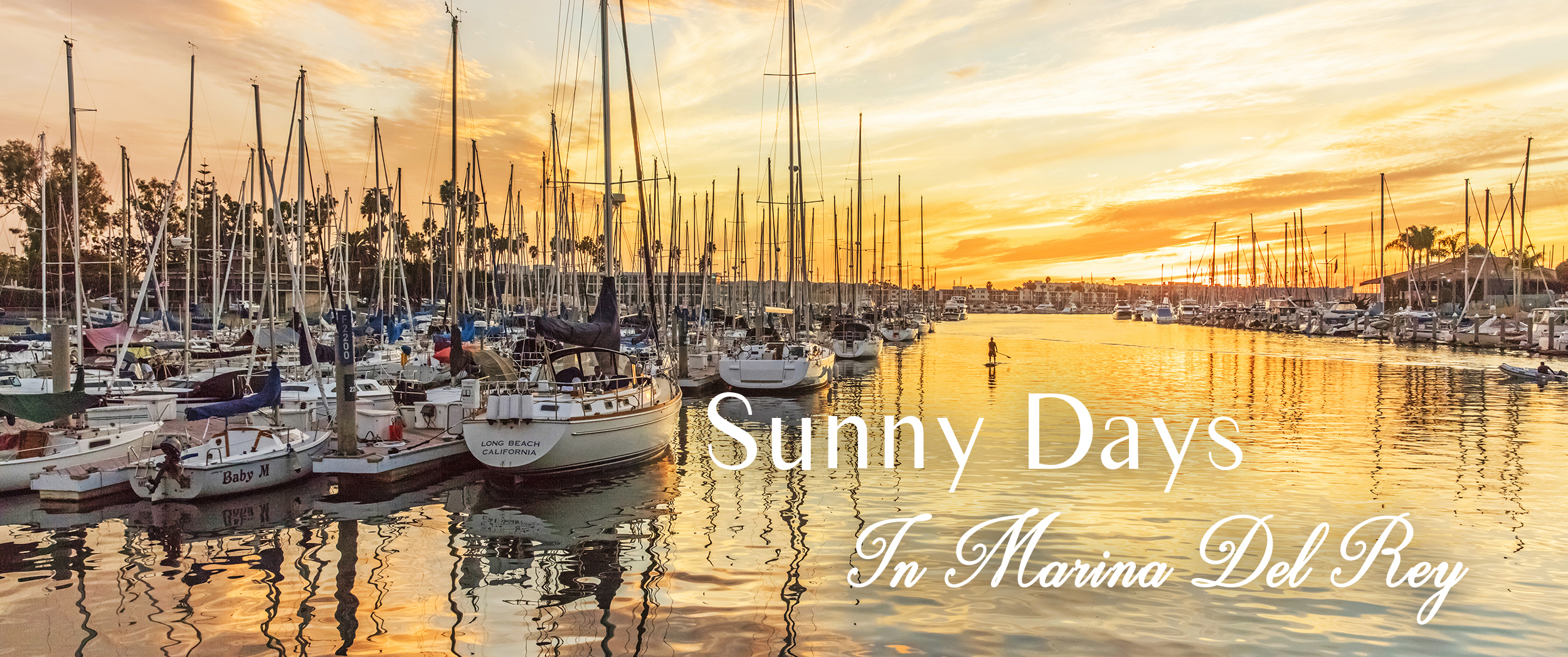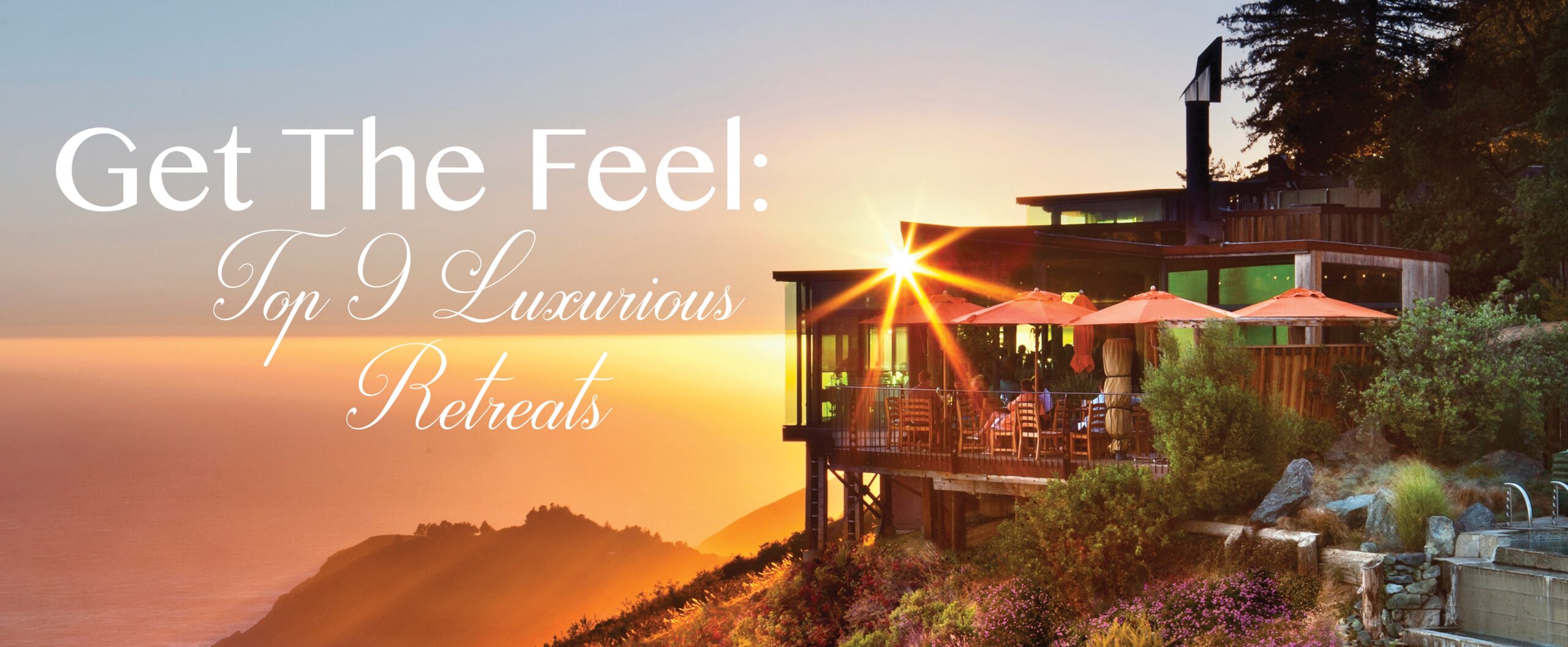Yucatan
Yucatán is one of 32 states that comprise the Federal Entities of Mexico. It is currently the safest state in Mexico and its capital city, Mérida, was awarded City of Peace in 2011.
The locals have a genuine hospitality, warm, and generous manner. This kind of openness and congeniality is evidenced by the large number of fondas, pop-up restaurants or inns in peoples homes that exist throughout the state. If you are looking to replace your usual five-star glitz for a little grit, be sure to visit a fonda, where you might find the best home-cooked cheese empanadas you have ever tasted.
For a true and authentic experience while visiting Yucatán be prepared for a spiritual, somewhat rugged adventure.
Getting Around
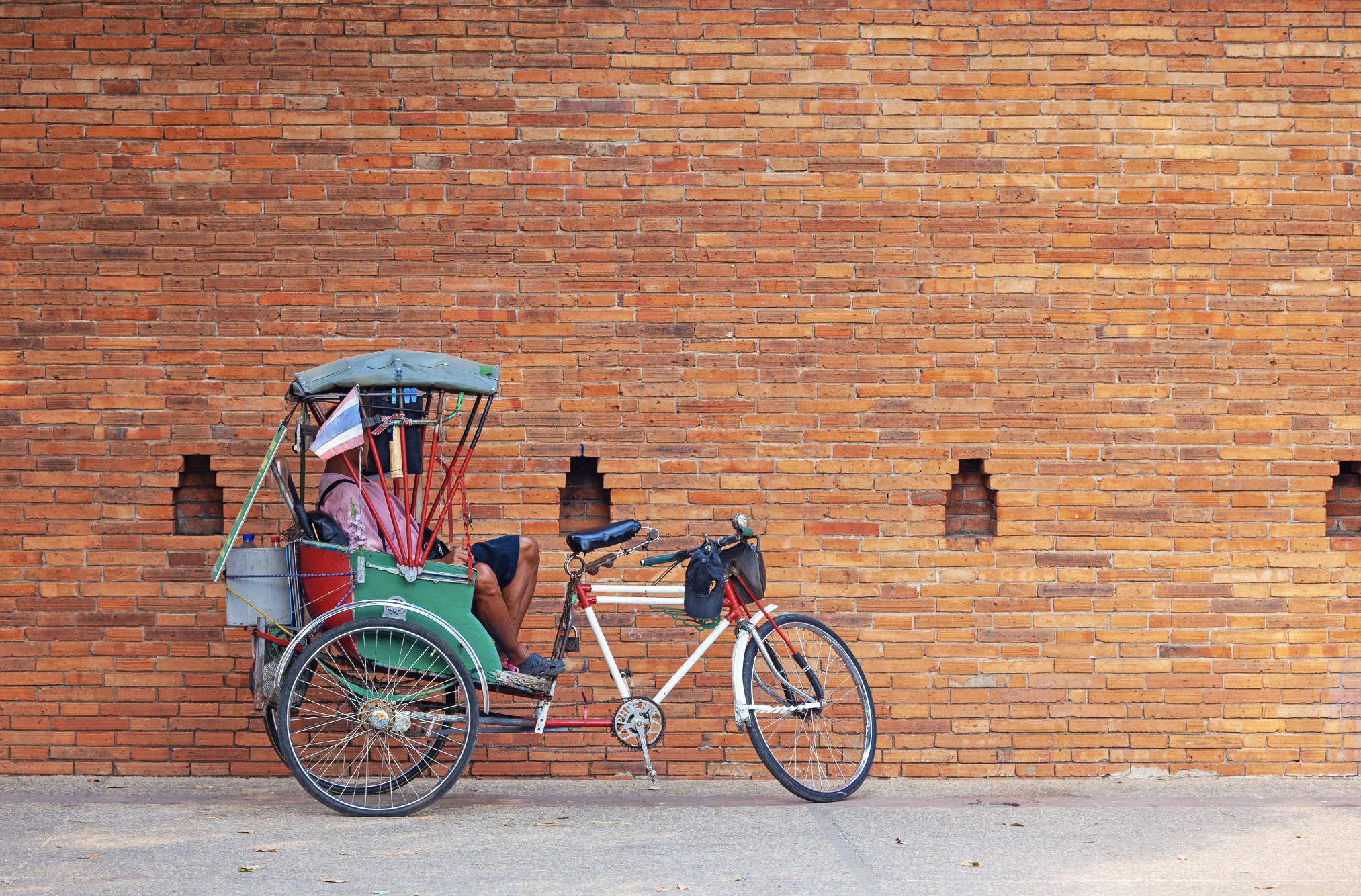 For those who have never visited Mexico, it is important to note that some traffic laws are different from the United States. For instance, licensed and registered ATVs, like four wheelers, are considered street legal in Mexico for driving on conventional roads. There are many companies that will rent ATVs for daily use and can even lead you on a tour through Mayan villages. You can also choose to travel by bicycle or pedicab. Pedicabs are bicycle cabs and are both a fun and practical means of transportation. These rickshaw-like bicycles are often motorized and usually have some kind of canopy for shade. This is a welcomed feature since, even in winter, the weather is generally hot and humid, with temperatures often hitting the low to mid 80s.
For those who have never visited Mexico, it is important to note that some traffic laws are different from the United States. For instance, licensed and registered ATVs, like four wheelers, are considered street legal in Mexico for driving on conventional roads. There are many companies that will rent ATVs for daily use and can even lead you on a tour through Mayan villages. You can also choose to travel by bicycle or pedicab. Pedicabs are bicycle cabs and are both a fun and practical means of transportation. These rickshaw-like bicycles are often motorized and usually have some kind of canopy for shade. This is a welcomed feature since, even in winter, the weather is generally hot and humid, with temperatures often hitting the low to mid 80s.
Sites to See
Acanceh, a town and ancient Maya archaeological site 21 kilometers from Mérida. The town was founded sometime between 300 and 500 AD and is known for its churches which are constructed from former Mayan temples and pyramids. The population is still mostly Maya who speak the Yucatec Maya language but usually understand basic Spanish. Fun fact: Yucatecan teenager, Santos Tuz, native to the town of Oxkutzcab, teaches Mayan on his TikTok account with over 300,000 followers. You can follow him at @Tuzsantos322. 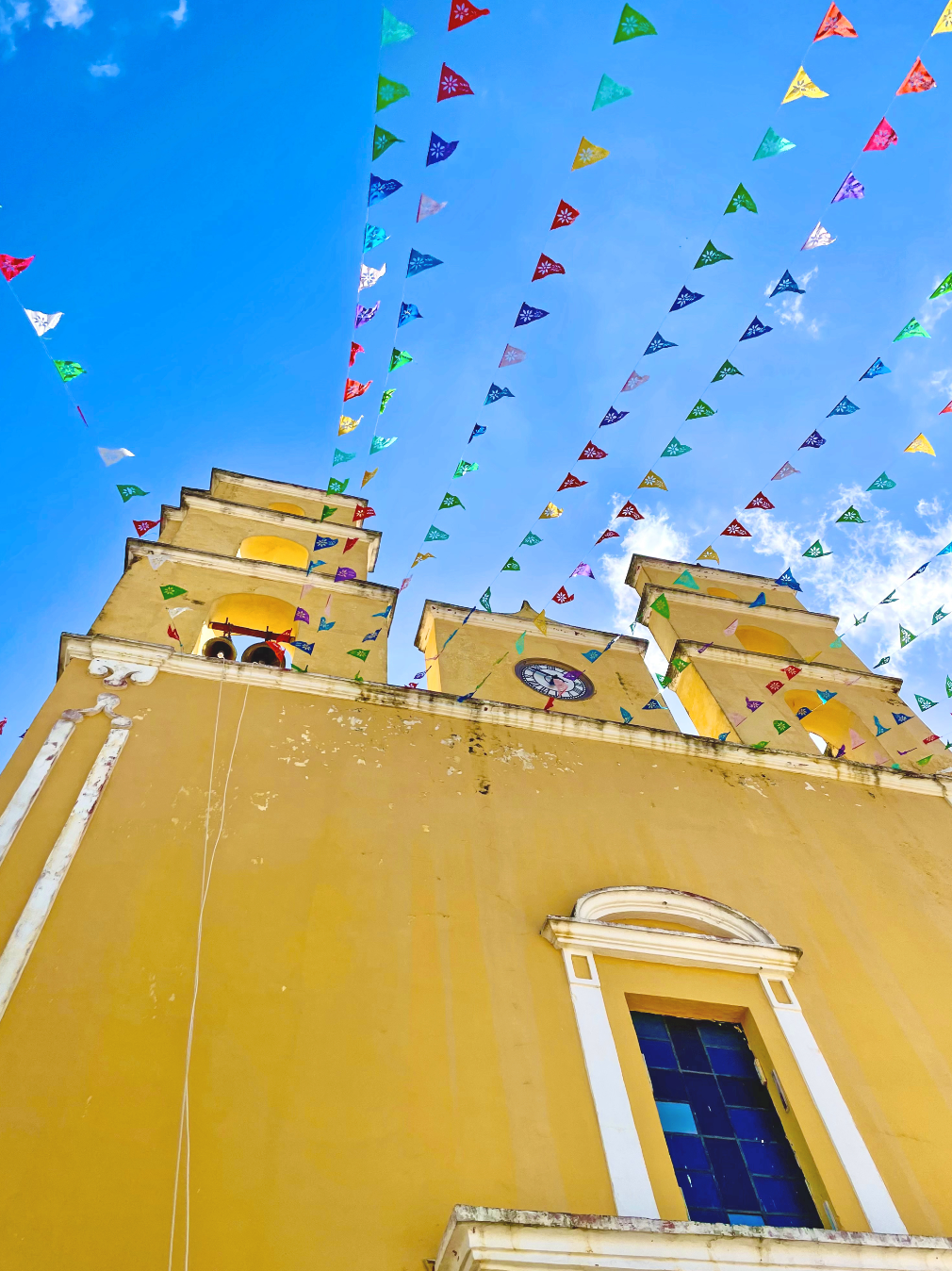
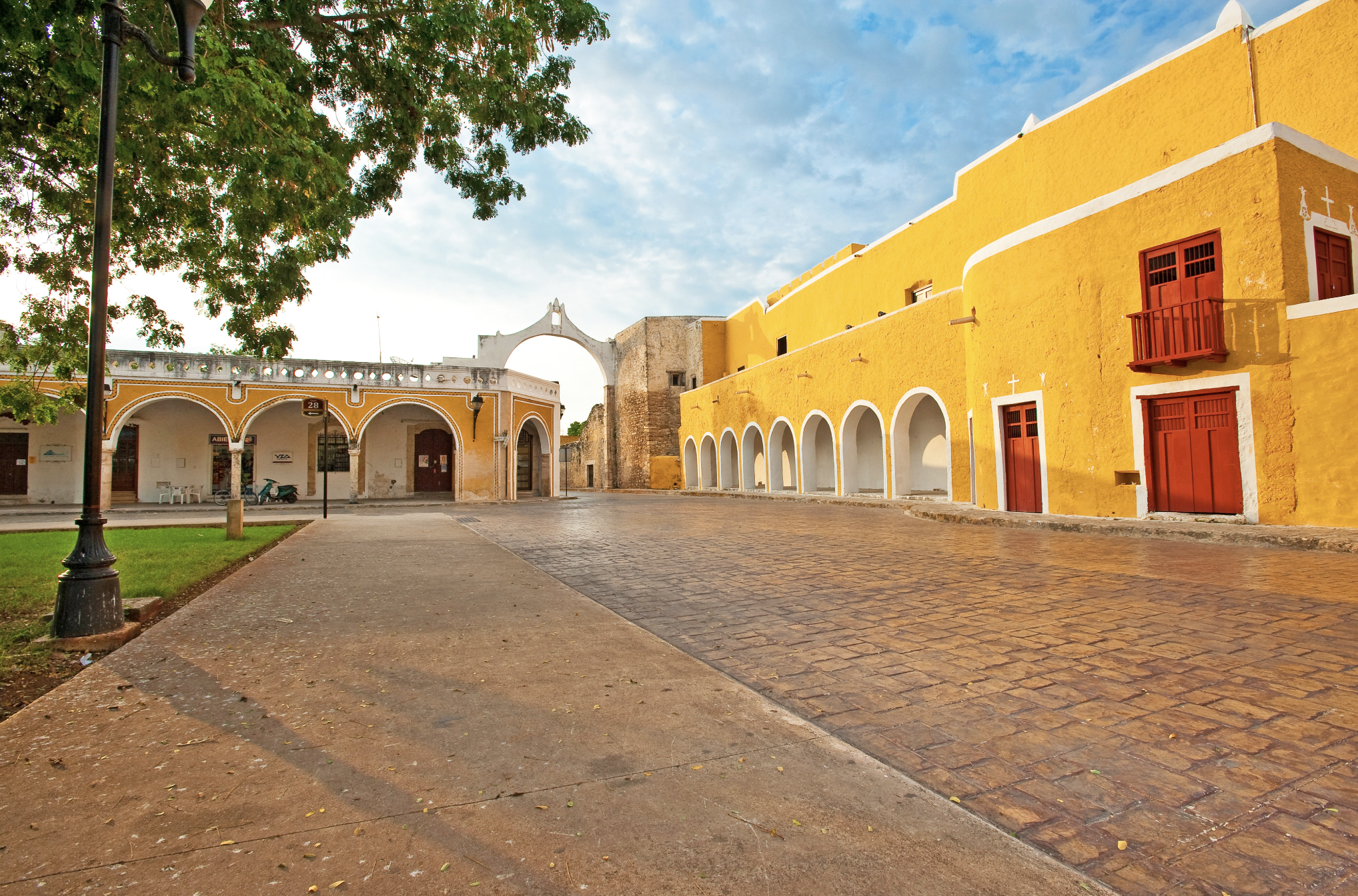 The central square of Acanceh is home to a vibrant yellow Colonial church, Arquidiócesis de Yucatán A.R. La Natividad and a pre-Columbian pyramid.
The central square of Acanceh is home to a vibrant yellow Colonial church, Arquidiócesis de Yucatán A.R. La Natividad and a pre-Columbian pyramid.
Izamal: 44 miles east of Mérida is a ceremonial Pueblo Mágico or magical town called Izamal. In the Yucatec Maya Language, Izamal means: dew of heaven. In this former capital city, almost every building in the area is painted yellow. With the blue sky as a backdrop, the architecture of this small colonial town makes for a very photogenic visiting experience. The optimistic primary color drenches the area in positivity and sunshine. Although there are many theories, why it is painted yellow remains a mystery. It is home to the historic Convento San Antonio de Padua, built in 1561 on top of the ancient Mayan worship center. The church dominates the center of Izamal and is an important place for worship among Catholics. It has the second largest enclosed atrium in the world (the Vatican has the largest). Many pilgrimage to this site as it is believed that the statues of saints inside the convent perform miracles. Izamal is also known as a town with three cultures because it holds the history of the ancient Maya people, Spanish colonials, and todays modern population.
Drive three hours east to the Riviera Maya and beach destinations like Cancun, Playa del Carmen and Tulum.
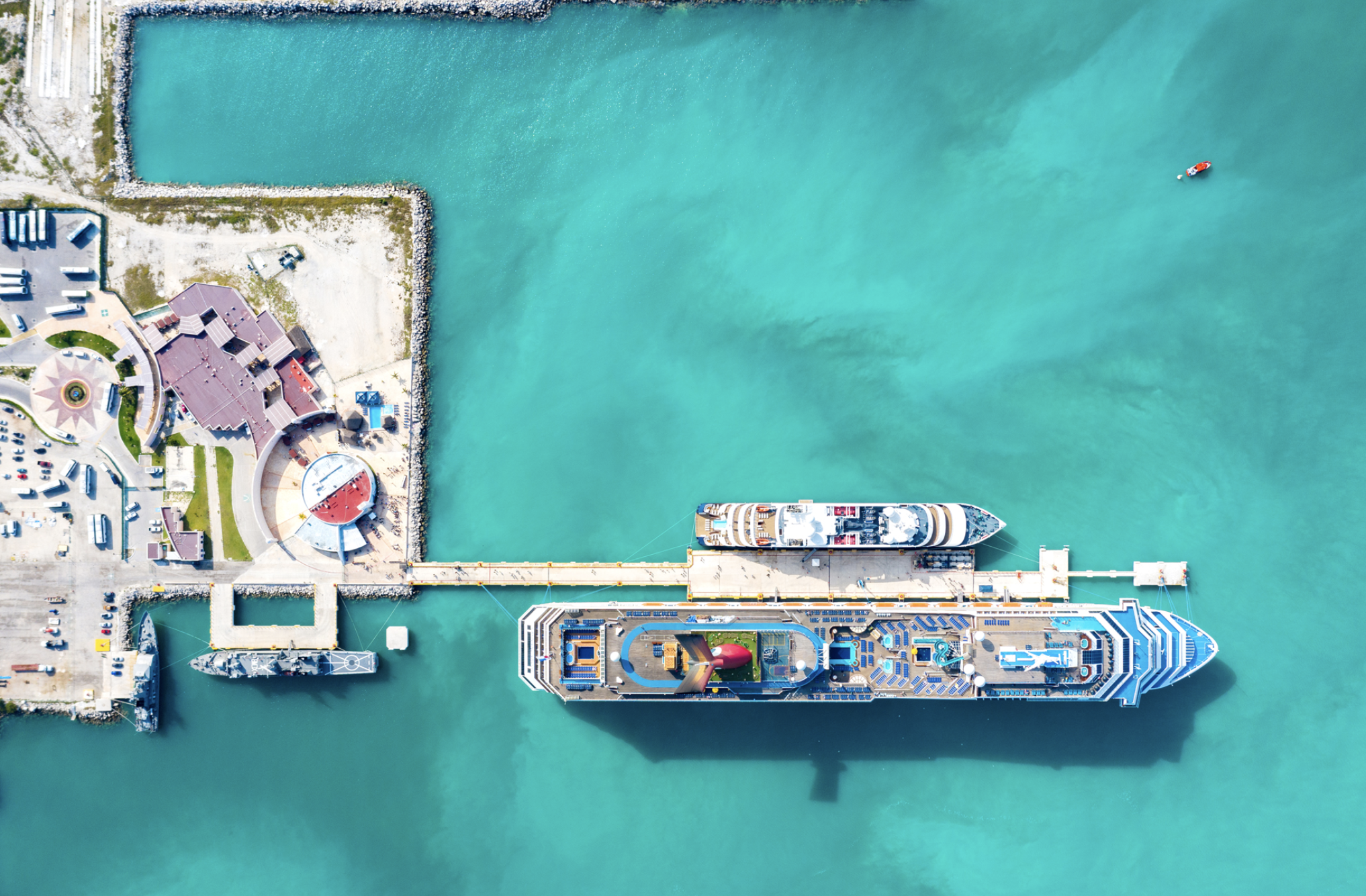 Puerto Progreso: Progreso is a port city on Mexicos Yucatán Peninsula. It is a common stop for cruise ships, which dock at its landmark long pier. An oceanfront promenade, the Malecón, is lined with beaches and thatch-roofed restaurants and bars. The Venice Beach-like boardwalk is bustling with nightlife. Keep an eye out for the Faro de Puerto Progreso, an active lighthouse built in 1893.
Puerto Progreso: Progreso is a port city on Mexicos Yucatán Peninsula. It is a common stop for cruise ships, which dock at its landmark long pier. An oceanfront promenade, the Malecón, is lined with beaches and thatch-roofed restaurants and bars. The Venice Beach-like boardwalk is bustling with nightlife. Keep an eye out for the Faro de Puerto Progreso, an active lighthouse built in 1893.
Cenotes: Cenotes, or sinkholes are natural deep-water wells. These aquatic systems are abundant throughout the Yucatán Peninsula. Cenotes were the only source of water in the jungle for the Mayan civilization and are considered sacred by the Mayan people. Cenotes are formed when rainwater absorbs a gas (carbon dioxide) from the air and forms a weak acid. As this trickles down through small cracks in the limestone, the weak acid dissolves a mineral in the limestone called calcite. Over time the limestone is dissolved and a cenote is formed. Ik Kil is a cenote outside Pisté in the Tinúm Municipality, Yucatán, Mexico. It is located in the northern center of the Yucatán Peninsula and is part of the Ik Kil Archeological Park near Chichen Itza. It is open to the public for swimming with an entrance fee of $80 pesos.
Architecture
The city of Mérida is an architectural nerds dream. The Yucatan economic boom of the 1800s caused an increase in stunning French-style mansions in the capital city. The economic expansion was due to the production of Henequen, a type of agave plant that grows widely throughout the Yucatan region. Henequen was discovered and cultivated by the indigenous Maya of the Yucatan Peninsula. The leaves of the henequen plant are used to make a fiber which is used to make rope or twine. When the Spanish arrived they renamed the plant agave sisal, mechanized the production process and began exporting agave sisal to other countries.
 This burgeoning economic market paved the way for the gentrification of the avenue of Montenegro in Merida, where those who benefitted from the green gold rush built large, somewhat ostentatious, nouveau-riche mansions modeled after the architecture on the Champs-Elysées. Some of these historic homes are possible to tour, including Montejo 495 Casa Museo, one of two almost identical twin mansions. Built in 1911, the public is now invited to see inside Casas Cámara, also known as the Casas Gemelas or Twin Houses. Montejo 495 Casa Museo is the house on the left if you are viewing them from the Paseo. It is a time capsule that brings visitors back to Yucatáns golden age. The homes marble-clad rooms, ornate French-style parlors, opulent artwork, and fine furnishings provide every design dork with a buffet of eye candy. Each room has a docent, speaking in both Spanish and English, to give the rooms context.
This burgeoning economic market paved the way for the gentrification of the avenue of Montenegro in Merida, where those who benefitted from the green gold rush built large, somewhat ostentatious, nouveau-riche mansions modeled after the architecture on the Champs-Elysées. Some of these historic homes are possible to tour, including Montejo 495 Casa Museo, one of two almost identical twin mansions. Built in 1911, the public is now invited to see inside Casas Cámara, also known as the Casas Gemelas or Twin Houses. Montejo 495 Casa Museo is the house on the left if you are viewing them from the Paseo. It is a time capsule that brings visitors back to Yucatáns golden age. The homes marble-clad rooms, ornate French-style parlors, opulent artwork, and fine furnishings provide every design dork with a buffet of eye candy. Each room has a docent, speaking in both Spanish and English, to give the rooms context.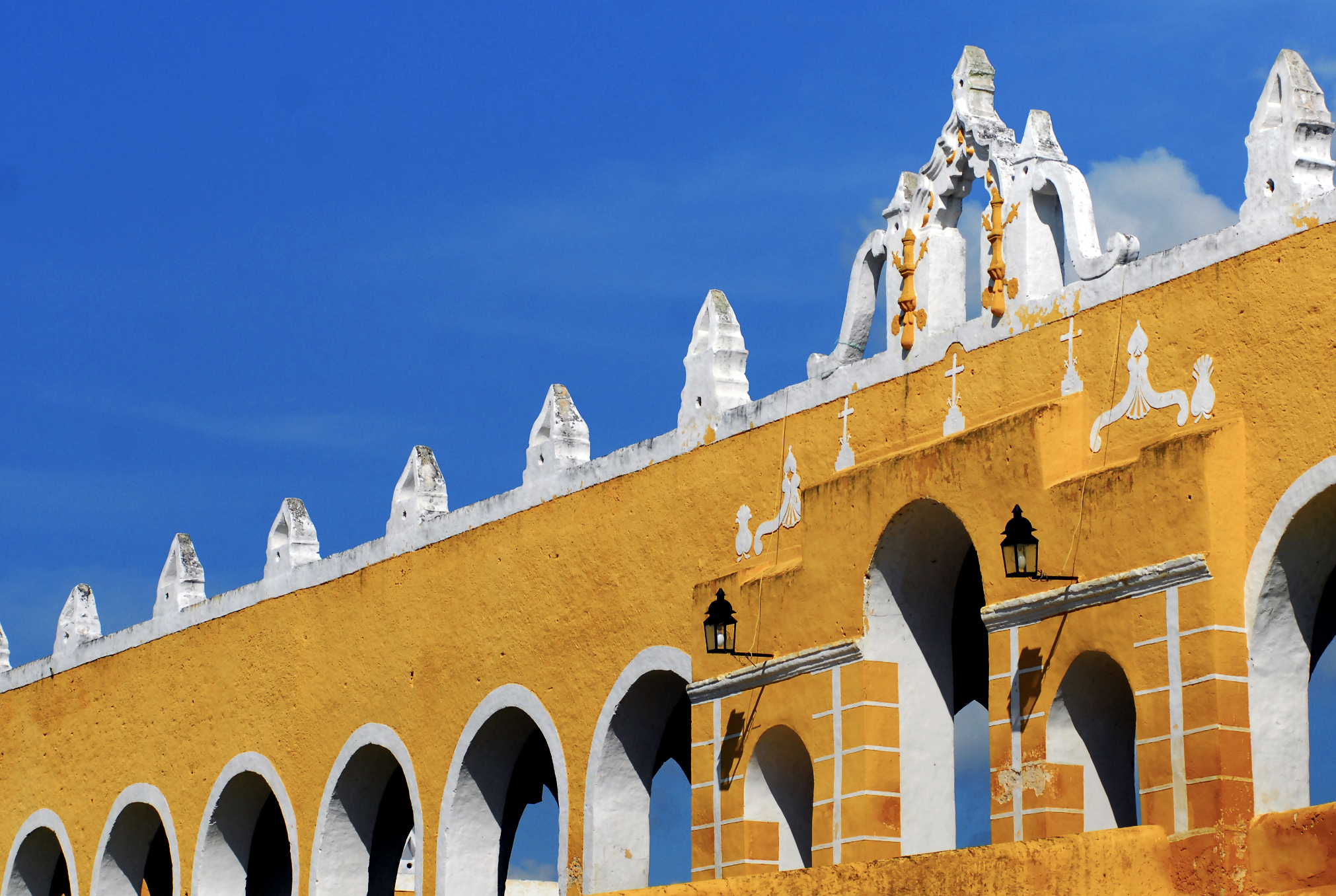
Culinary
One word: Chaya. Often called the Maya Miracle Plant, Chaya is a leafy green spinach-like vegetable. Esteemed as a staple food through the Pacific Rim and throughout Yucatan, it grows naturally in thickets and the open forest. You can find Chaya on almost every menu in Yucatan- mixed in creamy soups, salsas, salads, and, our favorite way: in a cocktail. It is prized for its nutritional value, boasting a richer iron content than spinach. It is also a powerful source of potassium and calcium. According to the National Institute of Nutrition in Mexico City, chaya can improve blood circulation and vision, aid digestion, help lower cholesterol, help reduce weight, as well as provide many other health benefits.
You might be surprised to find that pavo (turkey) is also on the menu at most restaurants. Of course it makes sense since Turkeys are native to the eastern states of Mexico. In the United States, we generally think of carné asada, carnitas, al pastor, and pollo as the staple Mexican cuisine meat styles. In Yucatan, however, the cuisine is quite different from other regions of Mexico due to the significant influence of Maya culture. The food is most commonly built around these key ingredients- habanero peppers, corn, beans, citrus, achiote, and smoke.
Cochinita pibil or Yucatán-style barbecued pork is a popular dish. Pibil comes from the Mayan word píib, (in modern Mexican Spanish, pib), which is a Maya oven or a hole in the ground with a base of embers and hot stones. It is in this píib that the meat cooks for hours, slowly soaking up the aroma of the banana leaves its cooked in imparting a smokiness and earthiness that is likely impossible to recreate with more modern or conventional styles of cooking.
But if you are not ready to get down (literally underground) with the Maya-style home-cooked cuisine, below are four recommended restaurants in the state of Yucatan.
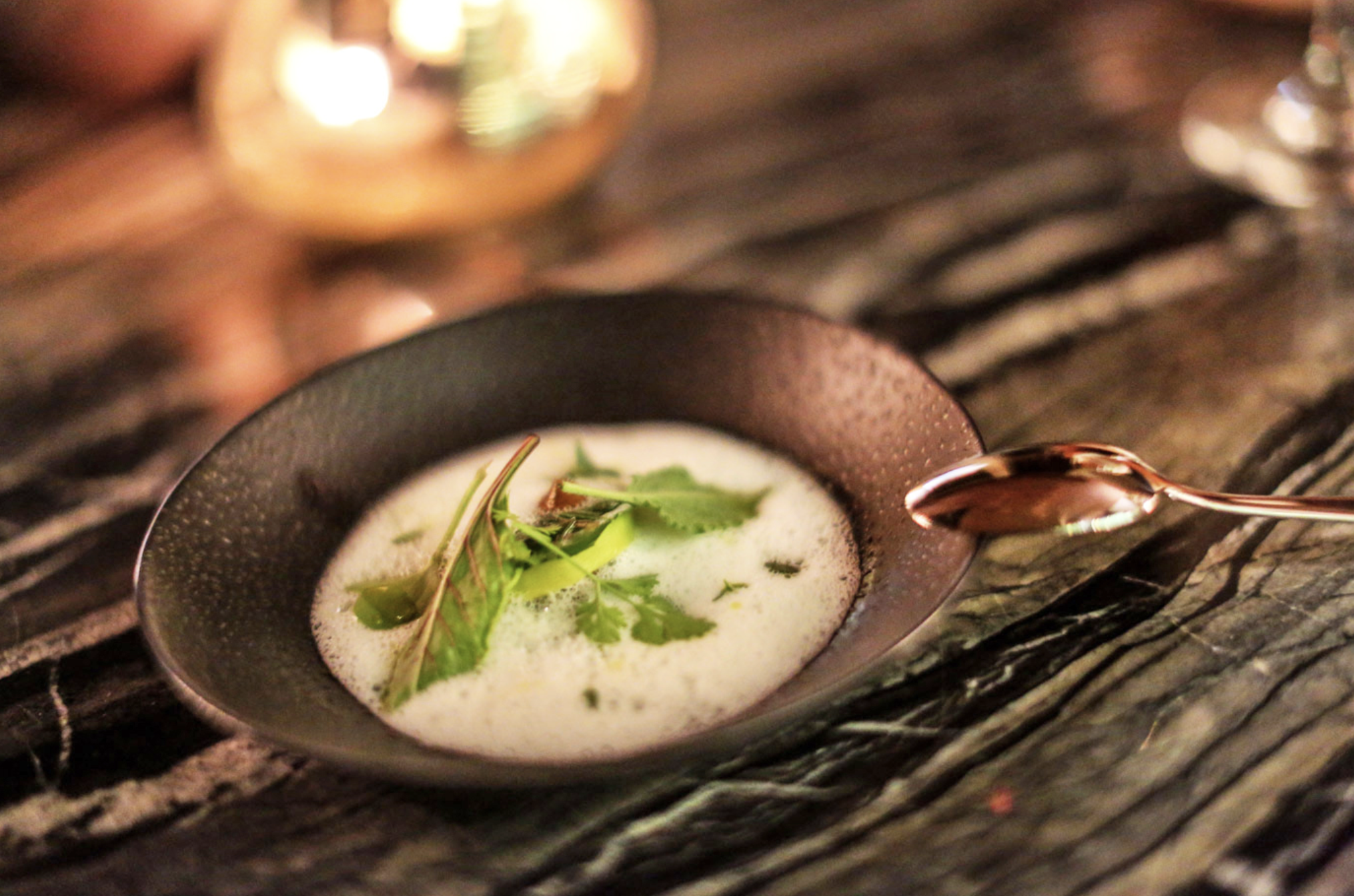 Where to Eat
Where to Eat
Micaela Mar & Leña. Calle 47 458, Centro, 97000 Mérida, Yuc., MX: We highly suggest visiting Micaela Mar & Lena for elevated local fare, Mezcal mixed drinks. Yelpers particularly rave about the attentive and engaging service and grilled pulpo (octopus) dish. While the menu is largely seafood based, it also contains many vegetarian options including a vegan ceviché. Seafood lovers can hit the raw bar and order fresh tuna, oysters, and shrimp. The wine list is extensive, but wine is only served by the bottle. Our tips? Follow your servers lead, as they are known to make excellent recommendations. Make sure to call in advance and make a reservation if you are planning to dine on a weekend evening. Many reviewers contend that if Micaela Mar & Leña was in the United States, they would be booked solid two weeks in advance.
KUUK. Avenida Romulo Rozo #488 por calle 27 y 27A Col. Itzimná, MX: Kuuk, or sprout in Mayan, opened its doors in 2012 and is located in a renovated mansion. The restaurant is known for its artistically plated gourmet meals. Choose between an a la carte menu or a 10 course prix fixe tasting menu with an optional wine pairing. Whatever michelin-level culinary journey you embark upon, this imaginative fine dining experience will not disappoint. Each dish is more creative than the next and most diners agree that the appetizers are in fact something to write home about: particularly the black ceviche and the coriander beef tacos. Do not miss out on the honeycomb dessert.
Ixiim. San Antonio Chablé, 97816 Chocholá, Yuc., MX: Located at hotel Chablé Yucatan Resort & Spa, Ixiim has a limited, but highly refined and curated menu created by chef Jorge Vallejo, one of the most renowned and respected chefs in Mexico. The menu is simple but innovative, a conscientious blend of modern and Mayan cuisine. A few menu favorites are the lobster tartare and the Asadero cheese soup with pork and corn husk ashes. Ixiim boasts a collection of 3,700 bottles of tequila, one of the largest tequila selections in the world, so make sure you take advantage of the tequila tasting!
 Where to Stay
Where to Stay
Tablaje #642, Chocholá, Yucatán México 97816: Celebrated for its breathtaking grounds and phenomenal service, Chablé Yucatan is a small, exclusive resort, not far from the capital city, Mérida. You will be welcomed with a Mayan ceremony and you will stay inside your own modern casita. Start your days with morning meditation by the propertys own private cenote at the spa. Enjoy healthy and balanced menu options at the onsite restaurant, Kiol, for daily breakfast and lunch.
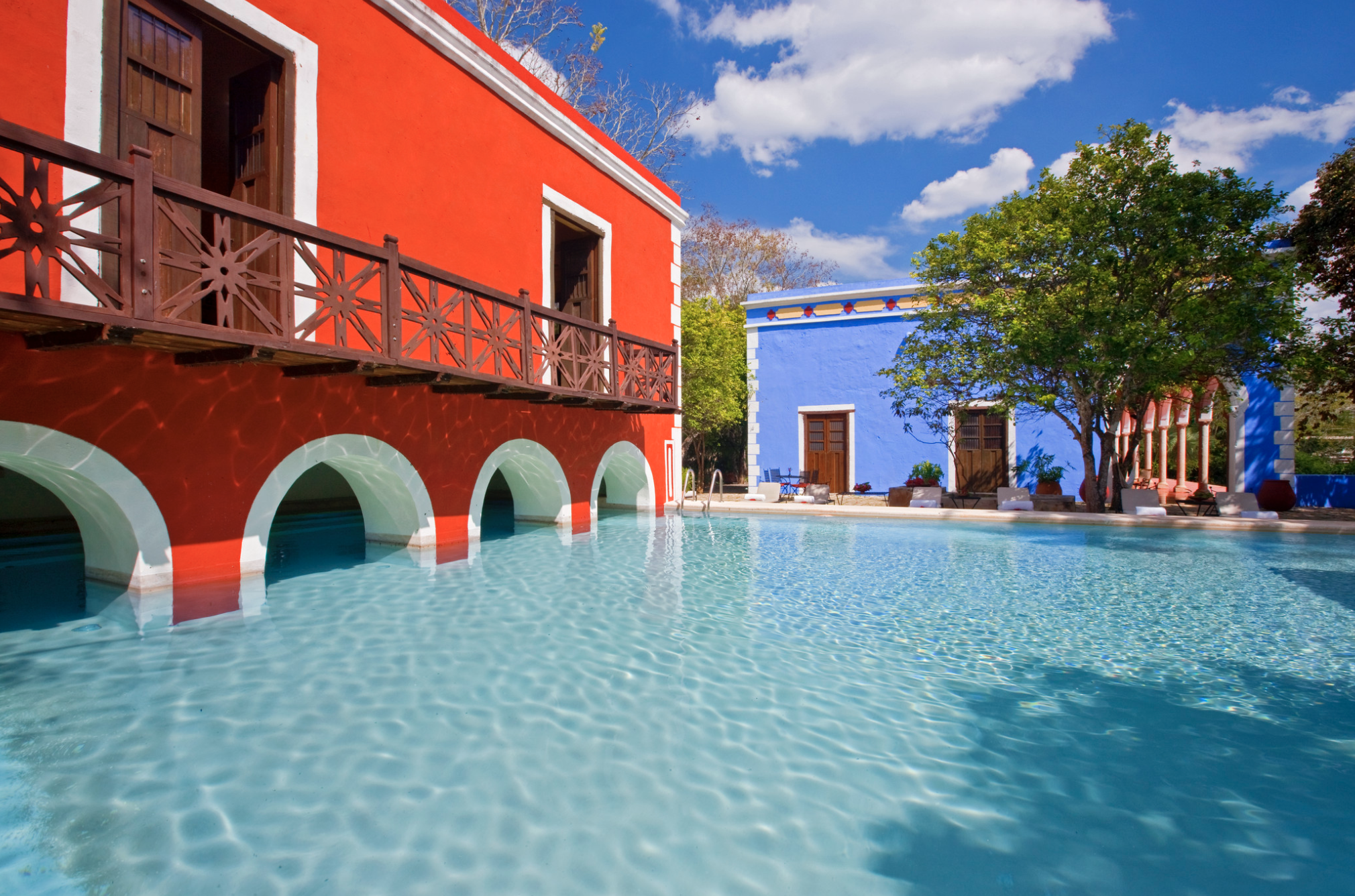 The following three hotels are Marriott properties. Before you think of the stark white, minimal, corporate, sometimes overly starched sheets that is typical of some Marriott hotels, it is important to note that, much to our delight, Marriott has been expanding to include more boutique-like hotels as well as opulent luxury properties (like its joint venture with BVLGARI) or, in the case of Hacienda Temozon, San Jose, and Santa Rosa more eclectic and geographically authentic properties.
The following three hotels are Marriott properties. Before you think of the stark white, minimal, corporate, sometimes overly starched sheets that is typical of some Marriott hotels, it is important to note that, much to our delight, Marriott has been expanding to include more boutique-like hotels as well as opulent luxury properties (like its joint venture with BVLGARI) or, in the case of Hacienda Temozon, San Jose, and Santa Rosa more eclectic and geographically authentic properties.
Km 182 Carretera Merida-Uxmal, 97825 Temozón Sur, Yuc., Mexico: Hacienda Temozon has the most unusual and luxurious onsite spa. Hol-Be Spa is a Mayan Spa that uses only natural products. It is known for its signature Sobada Maya treatment. This unique healing massage is imparted at the spa by Mayan hands that have practiced this for over 150 years. It is an extraordinary experience and it should only be practiced by a regional therapist with extensive experience. Enjoy the massage in the hotels cenote surrounded by a lush sub-tropical jungle, the Hol-Be Spa offers an intimate and exclusive atmosphere. Regarding the guest rooms, do not expect modern, sleek, or glamorous design. Understand that the decor is regionally authentic. We suggest splurging on a suite so you can enjoy your in-room hammock and a private plunge pool on an ample terrace.
Km 30 Carretera Tixkokob-Tekanto, 97470 Tixkokob, Yuc., MX: Hacienda San Jose, shares a lot of the same qualities of Hacienda Temozon. Walkways of flower arches welcome you to Hacienda San Jose. Its colorful blue exterior is charming, and at night the flickering of candles throughout the grounds is romantic. Hacienda San Jose is a historical plantation house located in the northern Yucatan peninsula. If you are seeking adventure, the property is conveniently close to the Chichen Itza archaeological site. Guests can enjoy the outdoor pool, spa treatments, bicycles, private tours guided by archaeologists, historians and field experts, cooking classes with celebrated chefs, swimming and dining. Speaking of dining, the hotel has an exquisite onsite restaurant where you can taste both local and international cuisine prepared by San Jose Restaurants Chef Reyes Santos in a picturesque, transformative setting. Pro tip: Request the private table near the candlelit banyan trees for a romantic and truly social media-worthy dining opportunity.
Carretera Mérida Campeche DesviacióN Maxcanú, 97800 Santa Rosa, Yuc., MX: Hacienda Santa Rosa is an enchanting property that boasts lush gardens and intimate campfires. The authentic rooms and suites feature hand-carved wood furnishings and vintage Mexican decor. Each room is decorated with fresh flowers by local women dressed in their handmade, white, traditional, mayan dress, the Huipil. Renew your body, mind and soul with indigenous products and natural body treatments at the spa, then soak up the sun by the private pool. When hunger strikes, revel in the convenience of room service and savor fresh ingredients from the hotels own garden.
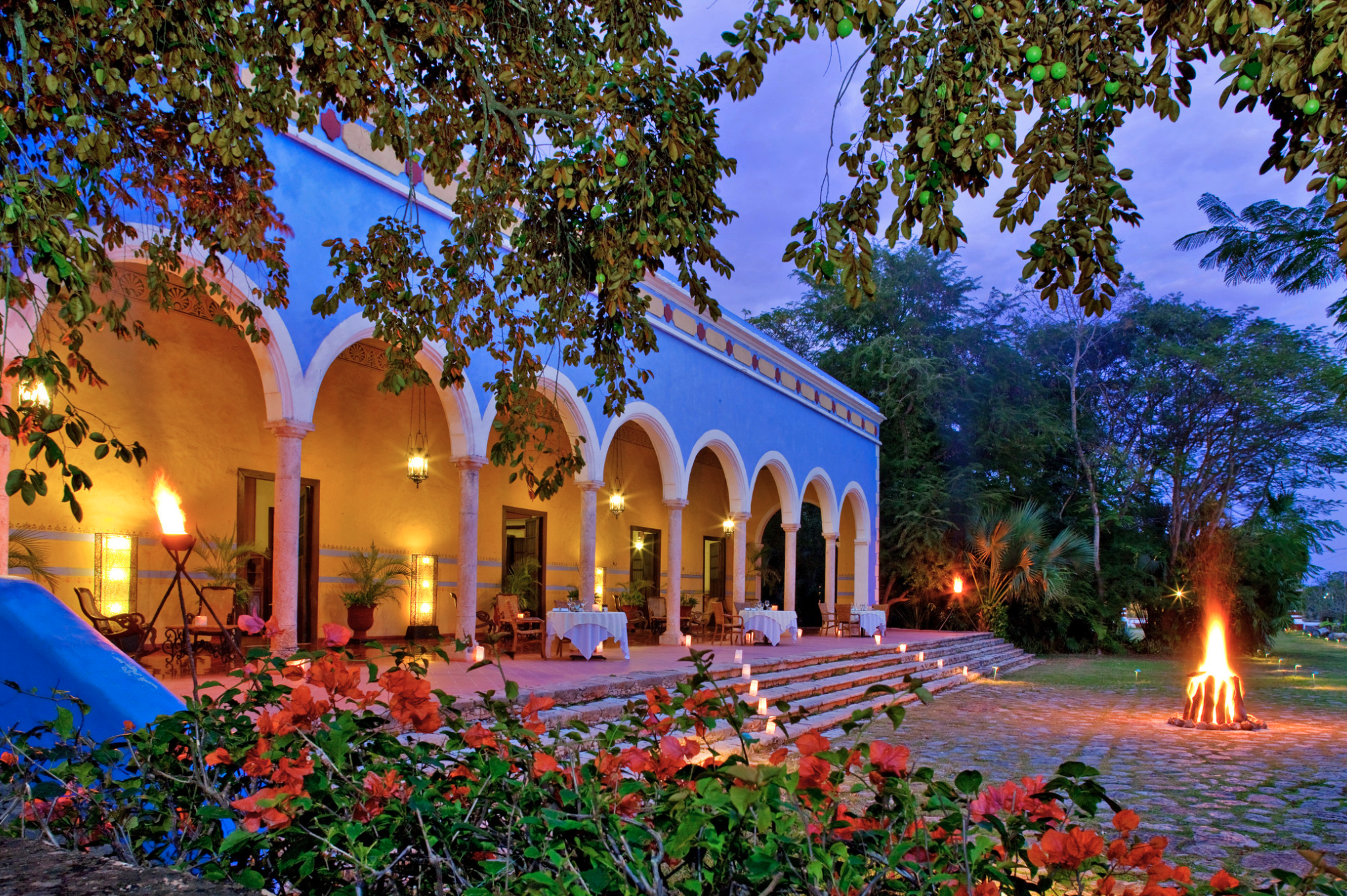


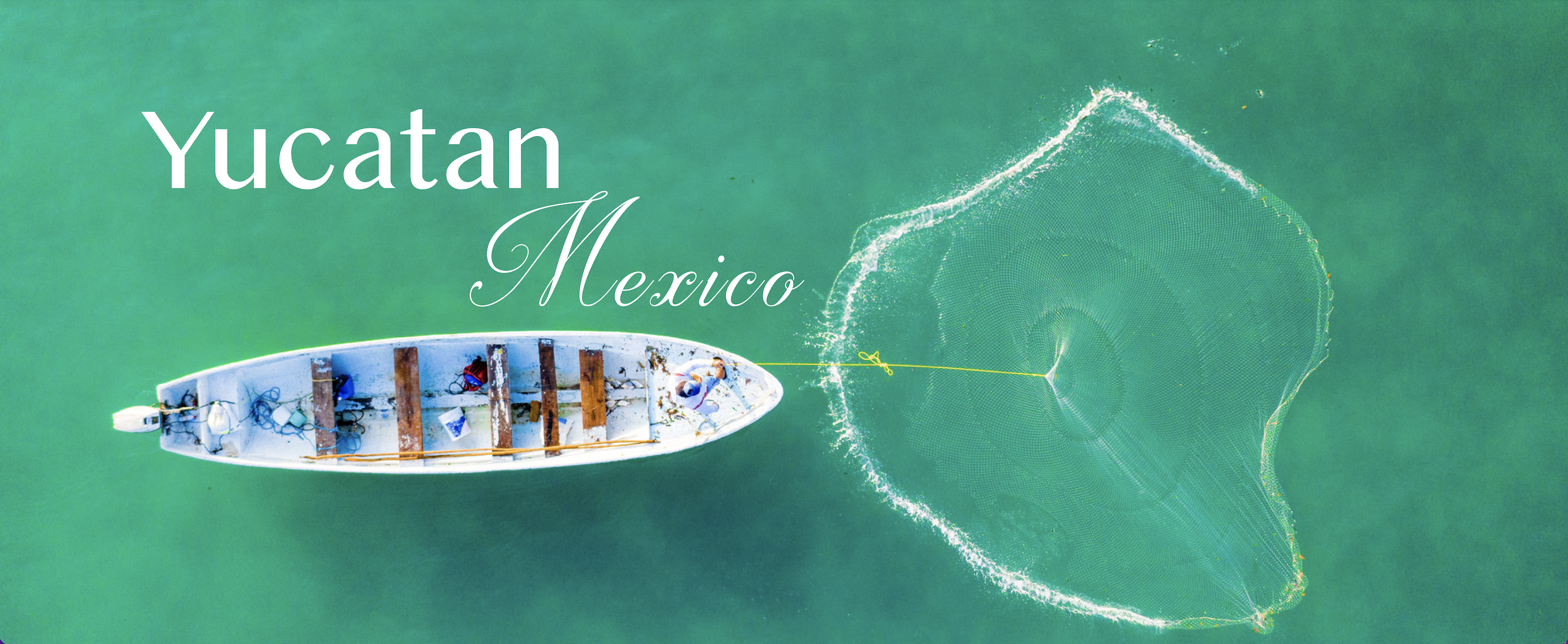
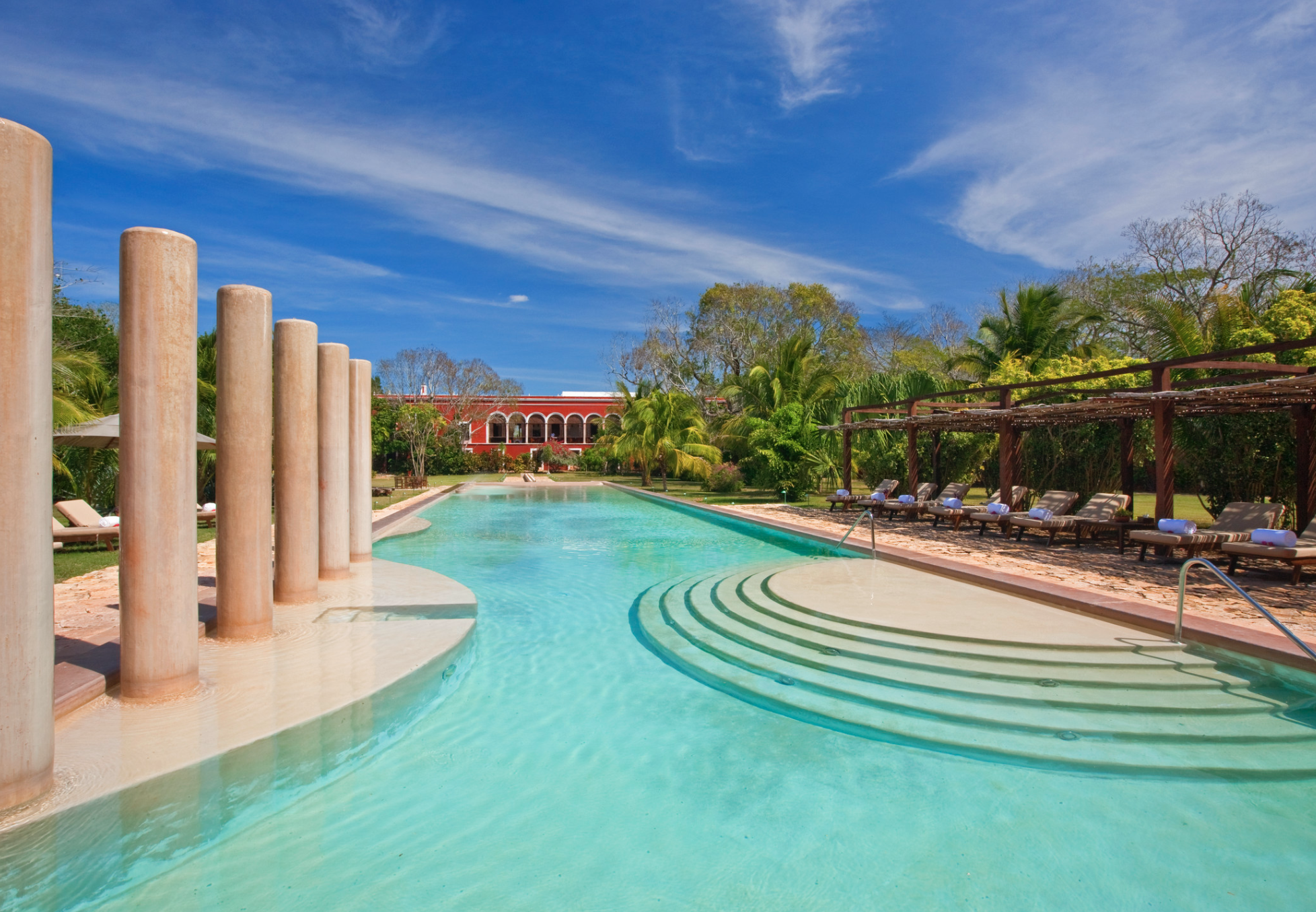 Hacienda San Jose
Hacienda San Jose